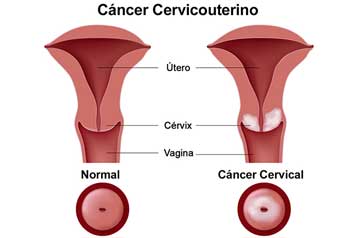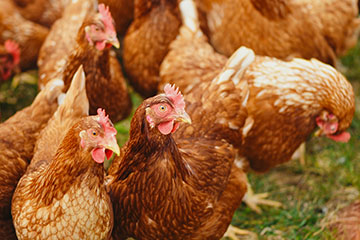Cholera Vaccines
Epidemiology
Cholera is spread mainly by faecal contamination of water and food and is closely linked to poor sanitation and lack of clean drinking water The actual global disease burden is estimated to be 3–5 million cases and 100 000– 130 000 deaths per year Recently larger and more frequent cholera epidemics have occurred New and more virulent variant strains of V.cholerae O1 El Tor are replacing the original El Tor in parts of Africa and Asia Emergence of antibiotic-resistant V.cholerae strains causes concern
Currently available cholera vaccines
1) Dukoral (WC-rBS): a monovalent oral vaccine based on formalin and heat-killed whole-cells (WC) of V. cholerae O1 plus recombinant cholera toxin B subunit.
2) Shanchol and mORCVAX: bivalent oral vaccines based on serogroups O1 and O139; these vaccines are closely related, but formulated by different manufacturers.
Manufacturers’ recommended schedules
Dukoral: 2 oral doses ≥7 days (but <6 weeks) apart for all aged ≥6 years. For age group 2–5 years: 3 doses ≥7 days, but <6 weeks, apart. If 2 d (or 3 rd ) dose not given within 6 weeks of the previous, restart primary immunization. A booster after 2 years for individuals aged ≥6 years. If >2 years since previous dose, restart primary immunization. For age group 2–5 years, 1 booster every 6 months; if >6 months since previous dose, restart primary immunization.
Shanchol /mORCVAX: 2 oral doses 14 days apart for all aged ≥1 year. A booster dose is recommended after 2 years.
Safety and efficacy/effectiveness
Dukoral and Shanchol/mORCVAX are safe in all age groups for which the vaccines are licensed (≥ 2 years and ≥1 year,
respectively)
Dukoral and Shanchol/mORCVAX offer significant protection against cholera during the first two years after vaccination: The ranges of protective efficacy at 4-6 months, 1 year, and 2 years after vaccination are 86%-66%, 62%-45%, and 77%-58%, respectively. Induction of herd protection is shown for Dukoral and considered likely for Shanchol/mORCVAX
Some characteristics of currently available cholera vaccines
- Dukoral induces efficacious short-term protection; 85% (95% CI 56-95%) overall, and 100% (95% CI 80-100%) in children aged 2–5 years at 4-6 months of follow up
- Due to its B-subunit, Dukoral confers significant short-term protection also against enterotoxigenic Escherichia coli (ETEC)
- Shanchol /mORCVAX induce longer protection in children aged <5 years and do not require booster doses every 6 months
- Unlike Dukoral, Shanchol /mORCVAX do not require a buffer or water for administration. Also, Shanchol /mORCVAX require less storage space
- Omission of the B-subunit makes Shanchol and mORCVAX less expensive to produce
WHO position on oral cholera vaccines
- Cholera control should be a priority in endemic areas.
- Given the availability of 2 oral cholera vaccines and data on their efficacy, field effectiveness, feasibility and acceptance in cholera-affected populations, these vaccines should be used in conjunction with other prevention and control strategies in areas where the disease is endemic, and immunization should be considered also in areas at risk for outbreaks.
- Cholera vaccination should be used in conjunction with other interventions.
- Vaccination provides an immediate short-term response while the longer term interventions such as improving water and sanitation are put into place.
- Although all age groups are vulnerable to cholera, where resources are limited immunization should be targeted at high-risk children aged ≥1 year (Shanchol
or mORCVAX) or ≥2 years (Dukoral).
Control of endemic cholera:
- Vaccination should be targeted at high-risk groups, often including preschool- and school-aged children, pregnant women and HIV-infected individuals.
- Countries may also consider vaccinating older age groups. Immunization of the entire endemic population is not warranted (risk assessment).
- Periodic mass vaccination campaigns are probbaly the most practical option for delivering cholera vaccines. Schools, health-care facilities, etc may be appropriate venues for such campaigns.
- Incorporating cholera vaccination into routine vaccination programmes is an alternative or complementary strategy to vaccination campaigns, for example to reach young children between campaigns.
- Documented duration of significant protection induced by current cholera vaccines is 2 years. Hence, initial vaccination with 2 doses should be followed by a booster every second year.
Control of cholera outbreaks
- The mainstays of control measures during epidemics remain appropriate treatment of cholera patients, improvement of water and sanitation, and mobilizing communities.
- Pre-emptive vaccination may prevent outbreaks or the spread of current outbreaks.
- Predictive risk-assessment tools to help determine possible need for pre-emptive cholera vaccination should be finalized and field-tested as soon as possible.
- Reactive vaccination may be an additional control measure, depending on local infrastructure, the epidemiological situation, and identification of target areas and should be guided by the 3-step WHO decision making tool.
- The feasibility and impact of reactive vaccination in halting outbreaks should be documented and disseminated.
Surveillance
It is strongly recommended that surveillance for microbiologically confirmed cases of cholera be instituted and integrated in already
existing surveillance systems/networks to measure the burden of disease and monitor the seasonality and the impact of vaccination
and other interventions in high risk populations.
Source
WHO. Updated WHO position paper on cholera vaccines
Geneva, Switzerland
March 2010






